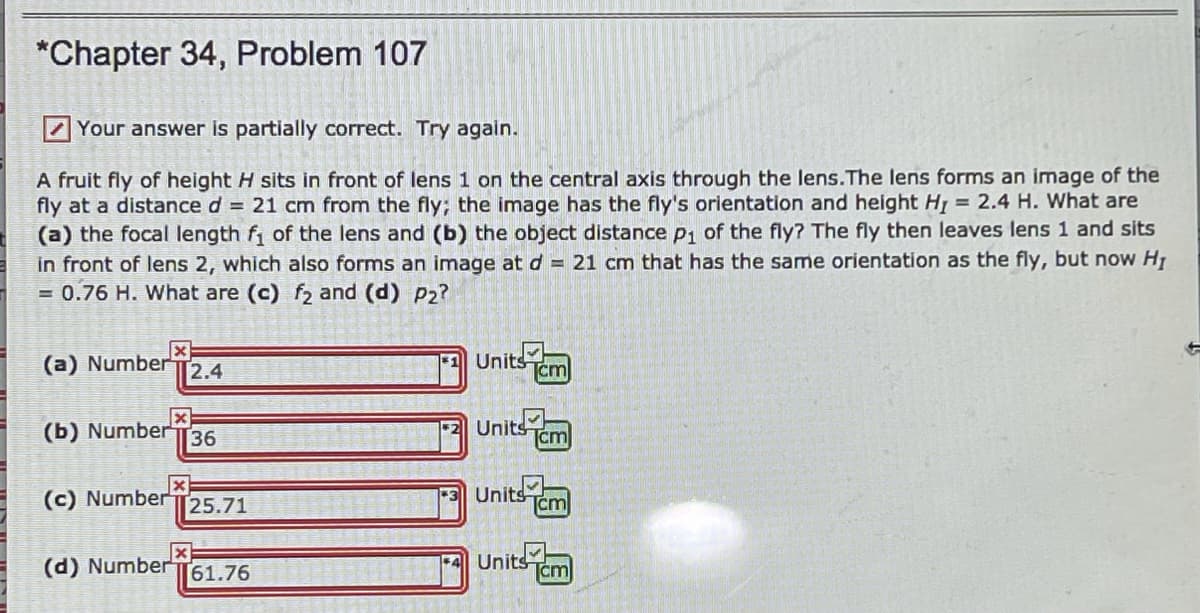A fruit fly of height H sits in front of lens 1 on the central axis through the lens.The lens forms an image of the fly at a distance d = 21 cm from the fly; the image has the fly's orientation and height H = 2.4 H. What are (a) the focal length f of the lens and (b) the object distance p1 of the fly? The fly then leaves lens 1 and sits in front of lens 2, which also forms an image atd = 21 cm that has the same orientation as the fly, but now H = 0.76 H. What are (c) f2 and (d) P2?
A fruit fly of height H sits in front of lens 1 on the central axis through the lens.The lens forms an image of the fly at a distance d = 21 cm from the fly; the image has the fly's orientation and height H = 2.4 H. What are (a) the focal length f of the lens and (b) the object distance p1 of the fly? The fly then leaves lens 1 and sits in front of lens 2, which also forms an image atd = 21 cm that has the same orientation as the fly, but now H = 0.76 H. What are (c) f2 and (d) P2?
Related questions
Question

Transcribed Image Text:*Chapter 34, Problem 107
Your answer is partially correct. Try again.
A fruit fly of height H sits in front of lens 1 on the central axis through the lens.The lens forms an image of the
fly at a distance d = 21 cm from the fly; the image has the fly's orientation and height H, = 2.4 H. What are
(a) the focal length f of the lens and (b) the object distance p1 of the fly? The fly then leaves lens 1 and sits
in front of lens 2, which also forms an image atd = 21 cm that has the same orientation as the fly, but now H
= 0.76 H. What are (c) f2 and (d) P2?
(a) Number
Units
cm
2.4
(b) Number
36
2Units Tcm
(c) Number
25.71
Units
|cm
(d) NumberT61.76
Unitsm
Expert Solution
This question has been solved!
Explore an expertly crafted, step-by-step solution for a thorough understanding of key concepts.
Step by step
Solved in 3 steps with 3 images
